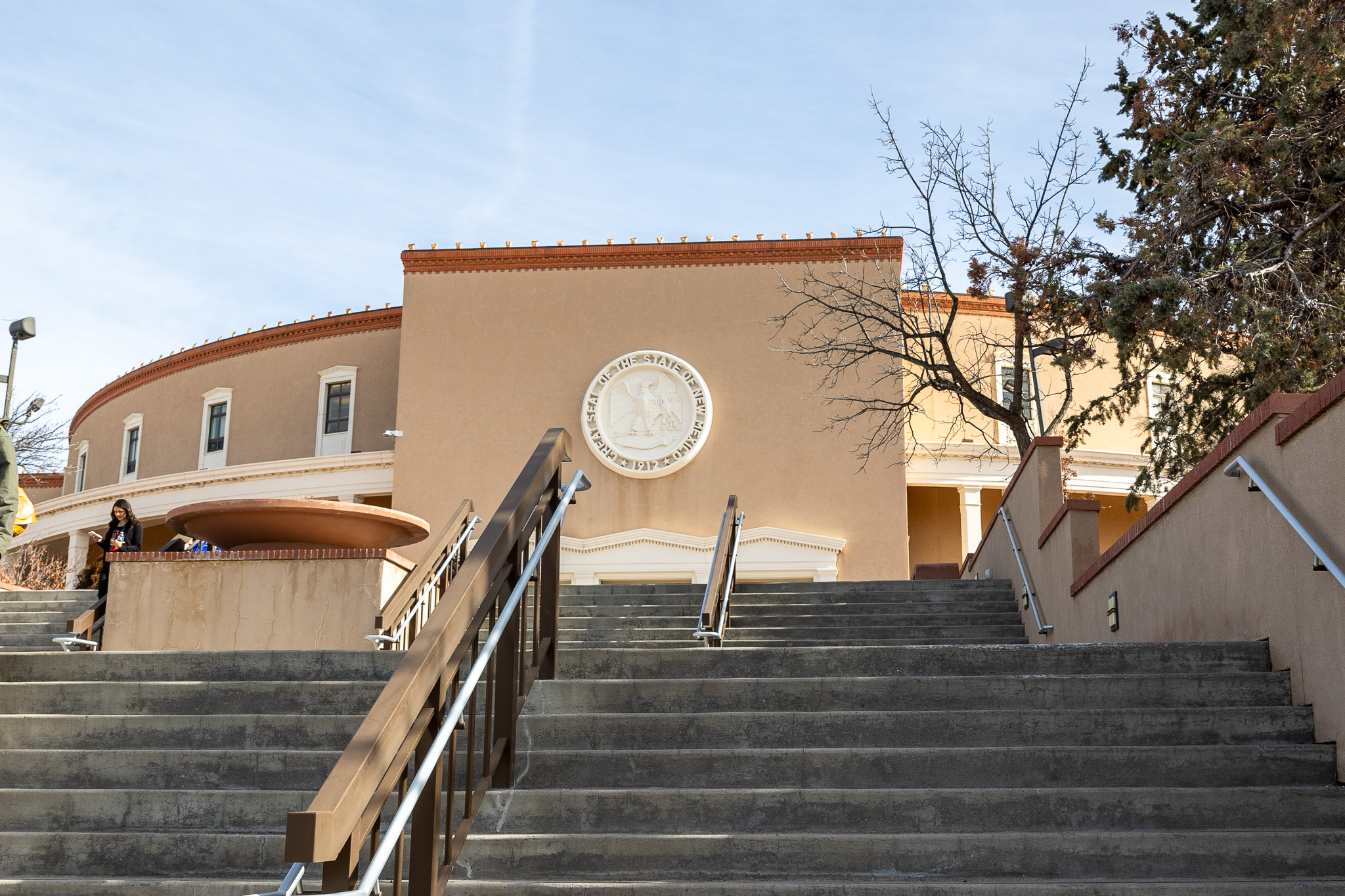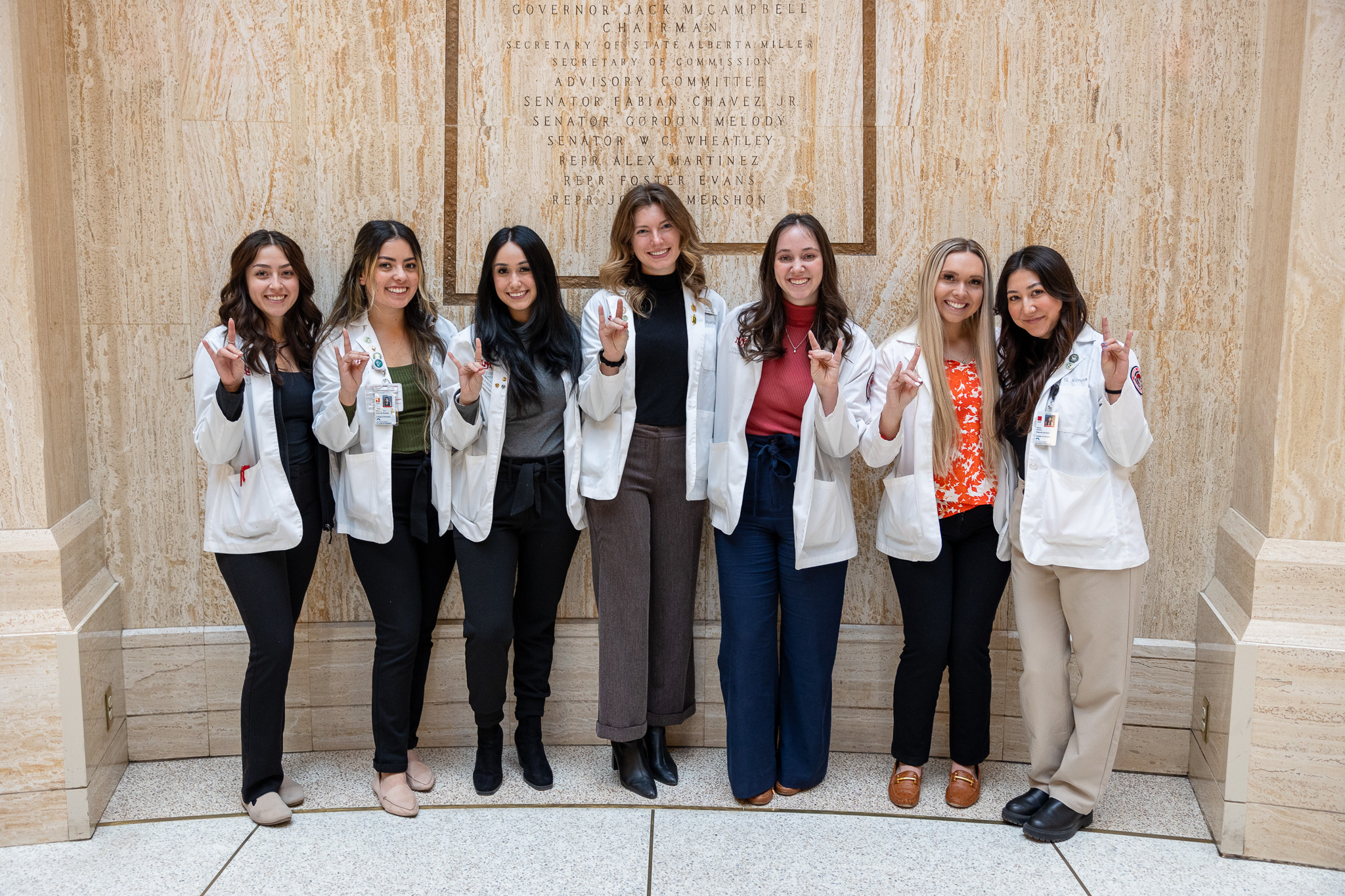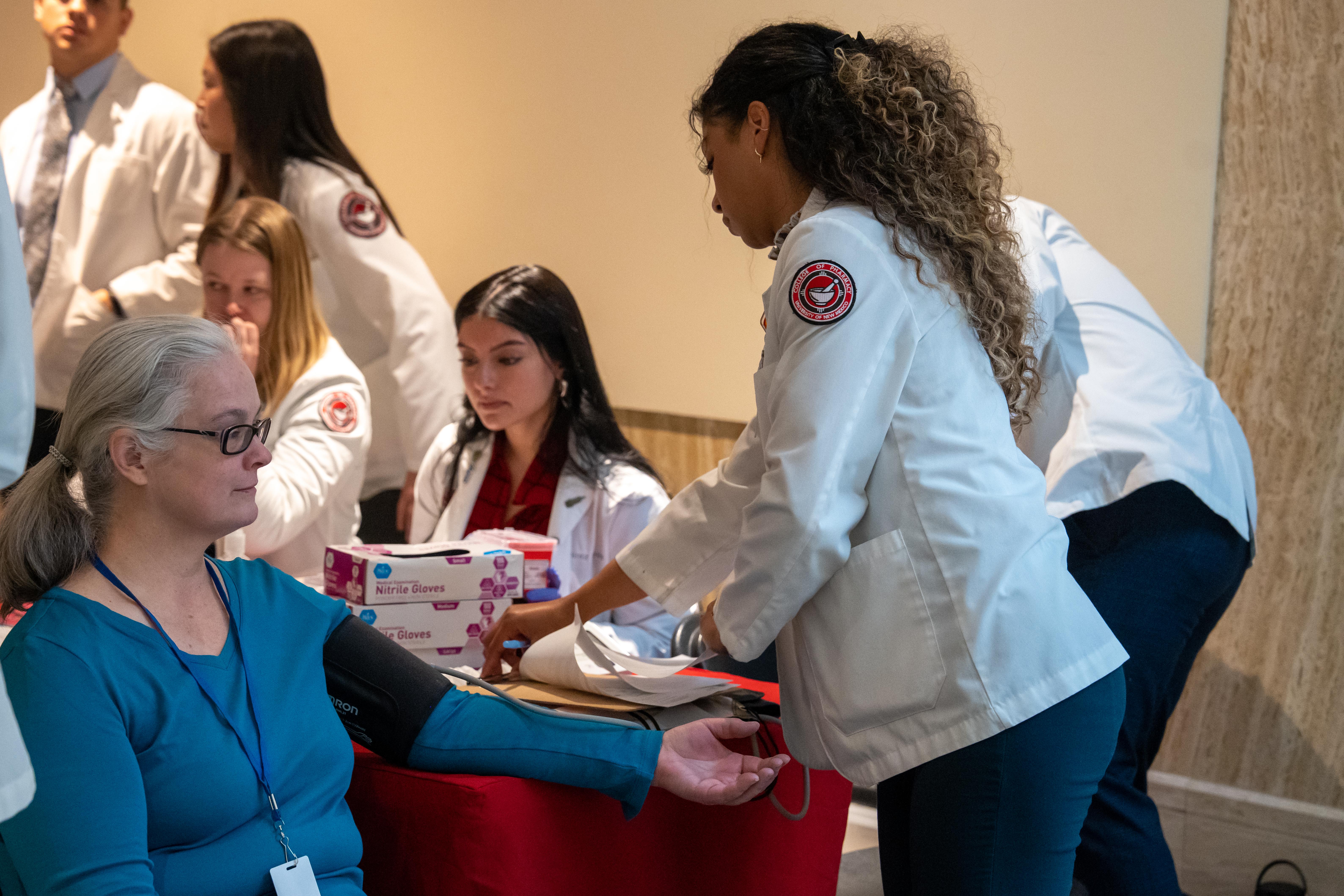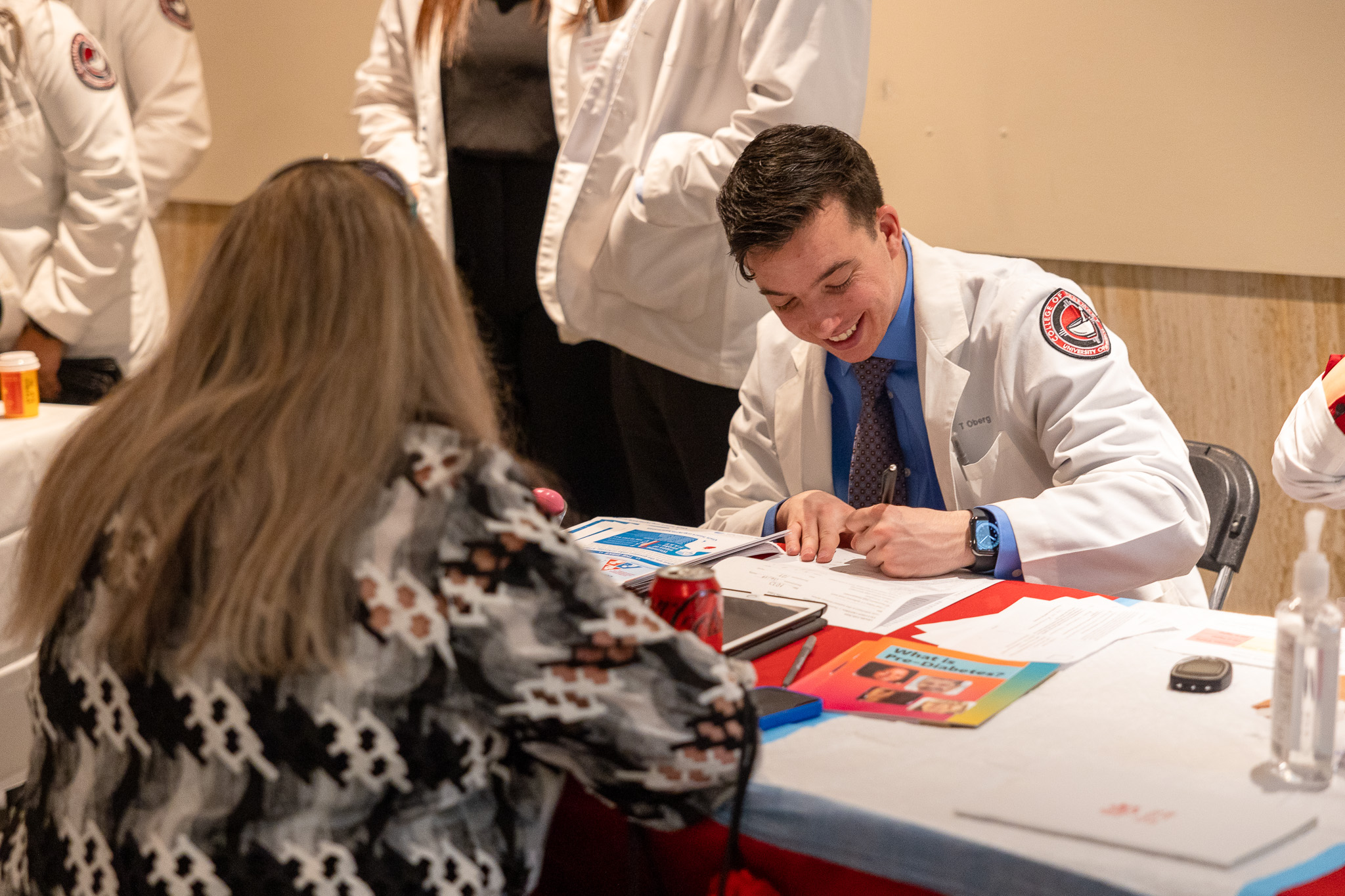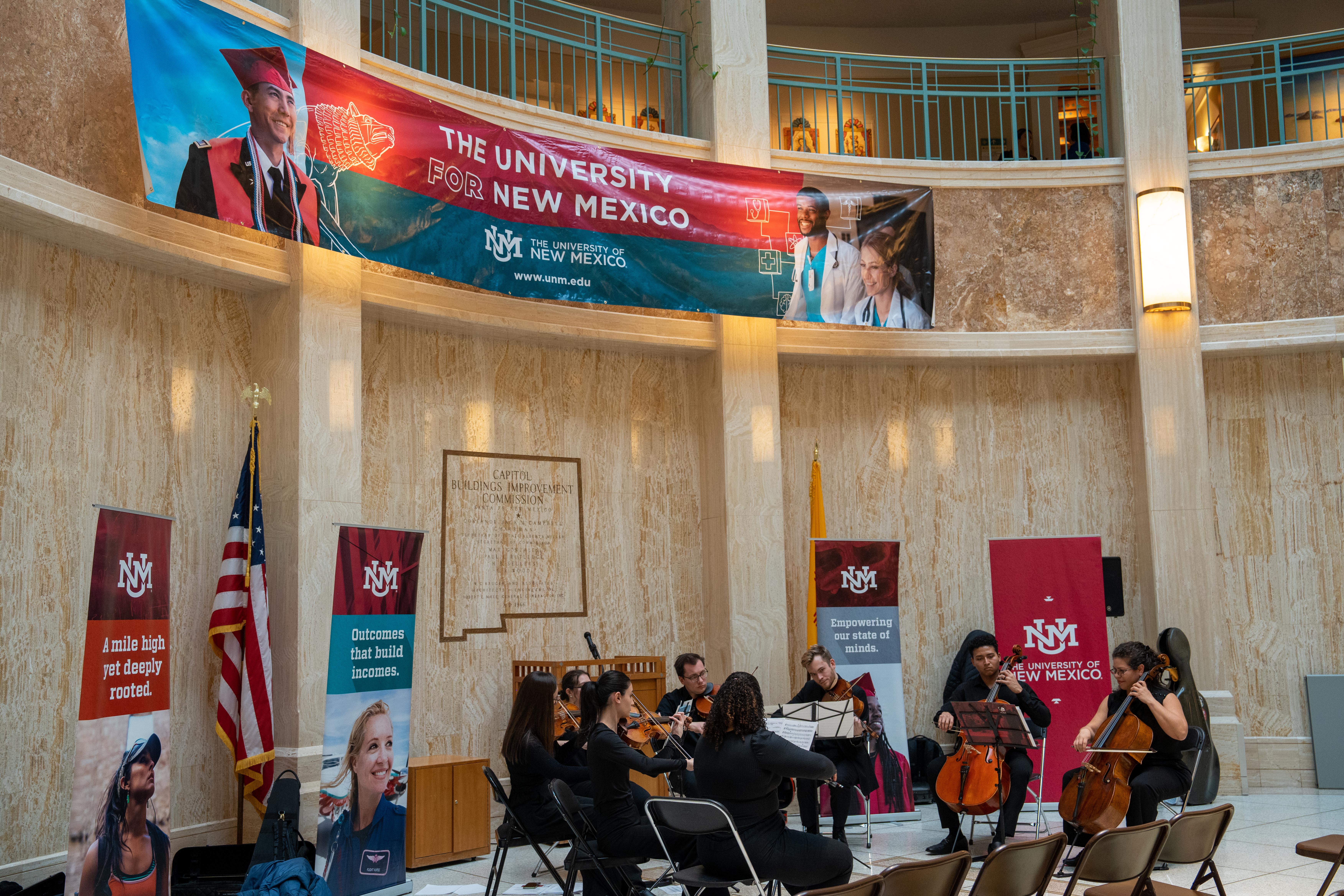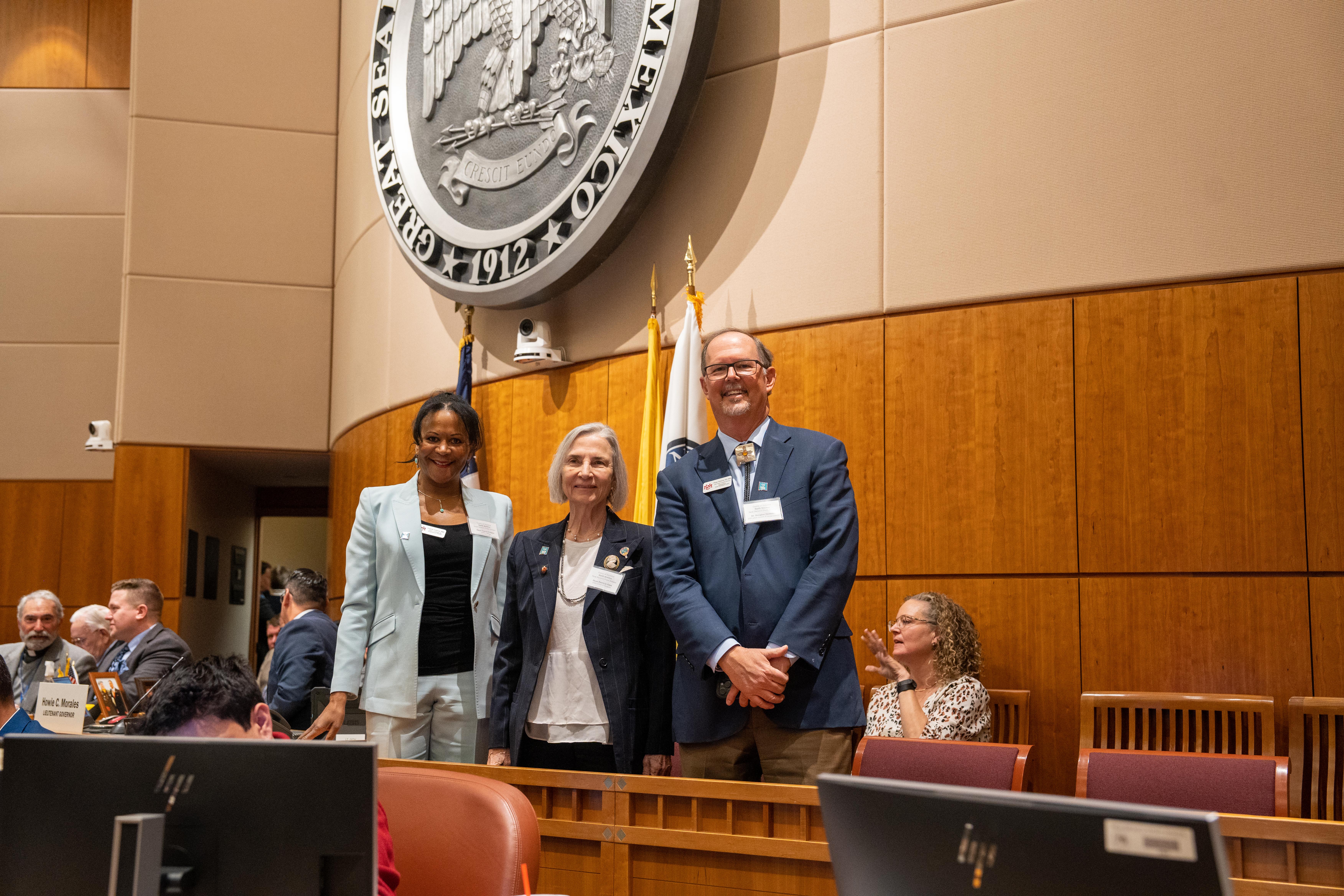The legislative session marks a time of action and progress in New Mexico. This year is no different with leaders at The University of New Mexico’s main campus and UNM Health and Health Sciences (UNM HHS) talking about and showcasing their list of action items to continue improving and building upon academics as well as a system that provides health care for more than 940,000 New Mexicans.
On Monday, Jan. 29, UNM leadership, faculty, staff and students packed the Roundhouse to engage with legislators on key priorities for The University of New Mexico, UNM HHS, New Mexico’s only academic health center and Level-I Trauma Center, as well as all of the university’s campuses.
The goal of UNM Day at the State Capitol is to impress legislators in Santa Fe by showcasing some of the outstanding people and programs at UNM, with an emphasis on previously funded programs, programs in need of funding, programs that are exceptionally exciting and resonate with the public and infrastructure requests across all of UNM’s campuses.
“New Mexico legislators and policymakers love to see all the wonderful work and programs that occur at the University of New Mexico, the UNM Health and Health Sciences at our branch campuses and across the whole state,” said UNM Chief Government Relations Officer Mike Puelle. “It’s better to have the folks doing the work and working on the programs talk to the decision-makers.
“Efforts like this have a big impact because up here at the Legislature, there are a lot of great ideas and things that they could fund. It’s a great experience to meet with people during the session. It’s very helpful to remind them about what’s happening around the state involving UNM. Also, it’s important to build those relationships on an interim period with the legislators and executive branch.”
In fiscal year 2025, some of the capital priorities include a new humanities and social sciences complex, various branch campus upgrades, and strengthening recruitment and retention for faculty, health professionals, and staff through improved compensation. On the HHS side, projects include a health sciences network upgrade to provide better coverage and replace old distribution switches, optical fiber, and network equipment. UNM Health leaders are asking the legislature for $11.3 million to accomplish these goals.
Another legislative priority is renovating the 48-year-old UNM College of Pharmacy building and equipping it with the latest technology to meet the needs of teaching, research, and student enrichment.
“We have the opportunity, with the College of Nursing moving out, to be able to take over some space,” said College of Pharmacy Dean Donald A. Godwin, Ph.D. “We need a building that is welcoming and really gives us a sense of home to the college.”
Over the past 79 years, the College of Pharmacy has awarded more than 3,300 degrees and provided training for 81% of pharmacists currently practicing in New Mexico. UNM Health leaders hope legislators will contribute $57 million toward this project, allowing them to train several thousand more pharmacists and expand services throughout New Mexico communities.
UNM School of Medicine Dean Patricia W. Finn, MD, has a few priorities for this session, focusing on utilizing artificial intelligence for better health care in New Mexico and fair faculty compensation.
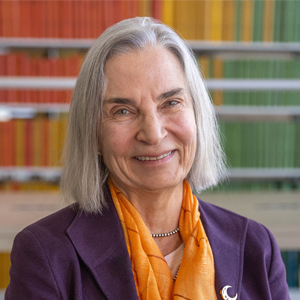
I really see New Mexico as a place to be an example, emblematic of everything that is good in the world, as we try to ensure that everybody has access to health care, that we train the next generation, and we are absolutely the place to come to for the integration of care, generosity, kindness and scientific discovery.
“We cannot train the next generation unless we have our teachers, our faculty, our mentors,” Finn said.
The UNM College of Arts & Sciences was one of several UNM colleges that participated in UNM Day at the Capitol. Associate Professor Damián Vergara Wilson, the Spanish as a Heritage Language Program coordinator at The University of New Mexico, highlighted New Mexico Spanish by having attendees play a word game with a display board with English translations of three phrases in New Mexican Spanish.
These phrases were printed on poster board and cut into bits of two or three words, so players had to place them in the matching spot on the larger board with the English translations. This display piqued the curiosity of many attendees and we had a great time engaging them with words such as zoquete for 'mud' and izque for 'they say.'
"While many attendees only knew a little bit of Spanish, others were proficient in New Mexican Spanish or other varieties of the language. We were delighted to see people who only knew key words, like iglesia for 'church', use their knowledge to make guesses and participate,” said Wilson. “It was also fun to participate with Spanish speakers who had not heard some of these words or phrases and who learned new things about their language. Most of all, it was great to see our New Mexican Spanish speakers interact with our exhibit and quickly place the smaller word boards under the matching phrases. I feel like these New Mexicans felt validated by seeing our Spanish in a place of such prestige as the Roundhouse."
In addition to faculty and staff participation, students had priorities to discuss with legislators. The Associated Students of The University of New Mexico (ASUNM) brought nearly 50 undergraduates to the Roundhouse for UNM Day to help lobby for campus community interests. Several ASUNM members will spend the session speaking with legislators about supporting capital outlay requests and student-focused programming. ASUNM is lobbying for $1.15 million in capital outlay funding that would go towards improving lighting on Cornell Mall, planning and designing an outdoor amphitheater, and installing sleep pods throughout campus.
Other legislative priorities for ASUNM include continued support for the Opportunity and Lottery Scholarships, support for anti-hazing legislation, funding for additional campus safety infrastructure, and funding for programs that will help address students' basic needs and mental health.
“Bringing students here gives legislators the opportunity to see what their investments look like. They can ask us questions and have conversations about what it means to be in higher education right now in 2024,” Krystah Pacheco, president of ASUNM, said. “A lot of these students are from rural New Mexico, or they come from underrepresented groups, and I think for them it’s about advocating for students like them and having the opportunity to share their experience.”
Members of the Graduate and Professional Student Association (GPSA) are also advocating for several projects, including Senate Bill 233, which would increase funding for underrepresented New Mexico residents seeking a graduate or professional degree. The Bill would serve as an update to the Graduate Scholarship Act passed in 1988.
“By funding graduate education, the state invests not just in individual ambition but in societal progress. Every scholar, researcher, and professional trained at this level becomes a beacon of knowledge, driving innovation and solving complex challenges that elevate the entire community,” said GPSA President Justin Lauriano.
Additionally, GPSA is lobbying for support of the HSC Rural Rotation Grant Program and additional funding for solar panels that will be placed on the Student Union Building. If approved, the new solar capacity would supply nearly 10% of the SUB’s total energy demands.
To read more about the legislative priorities for UNM and UNM Health and Health Sciences, click here.
